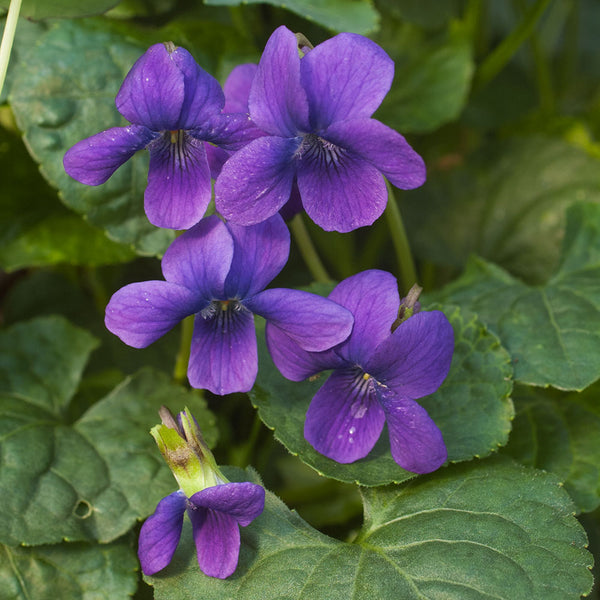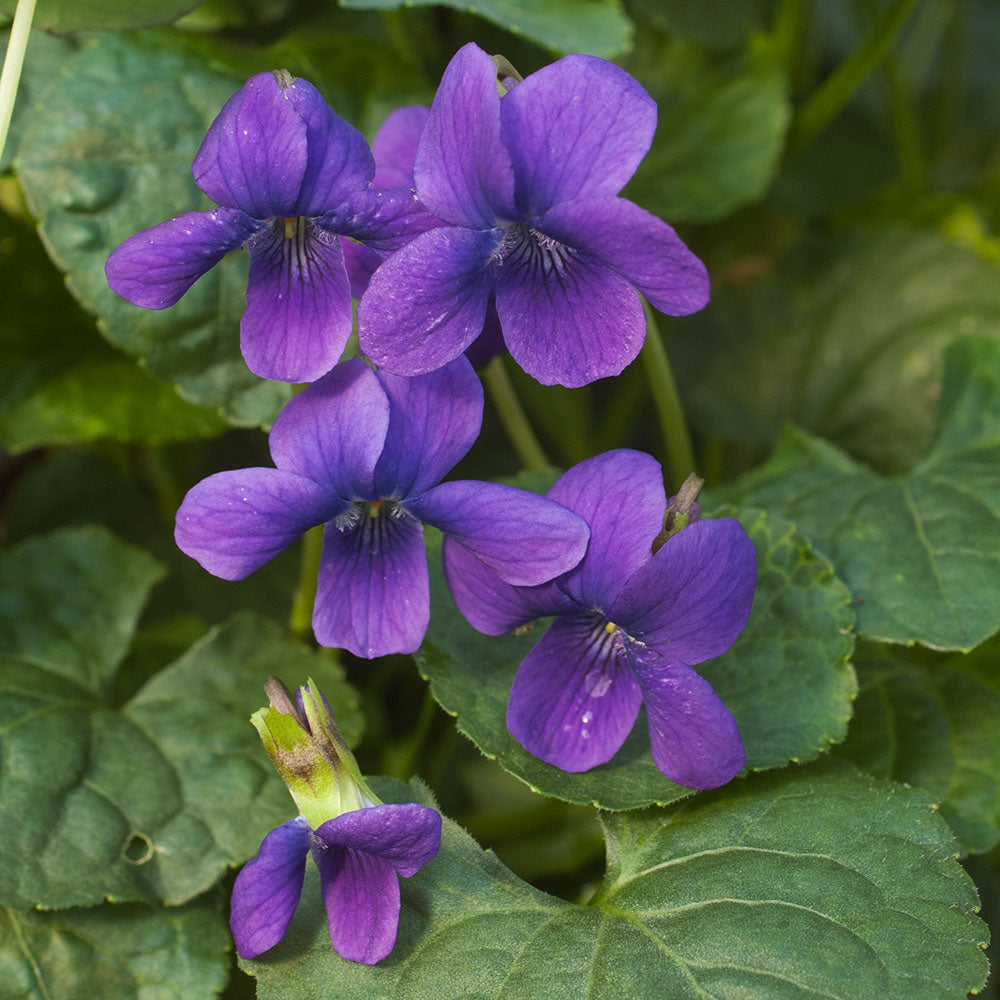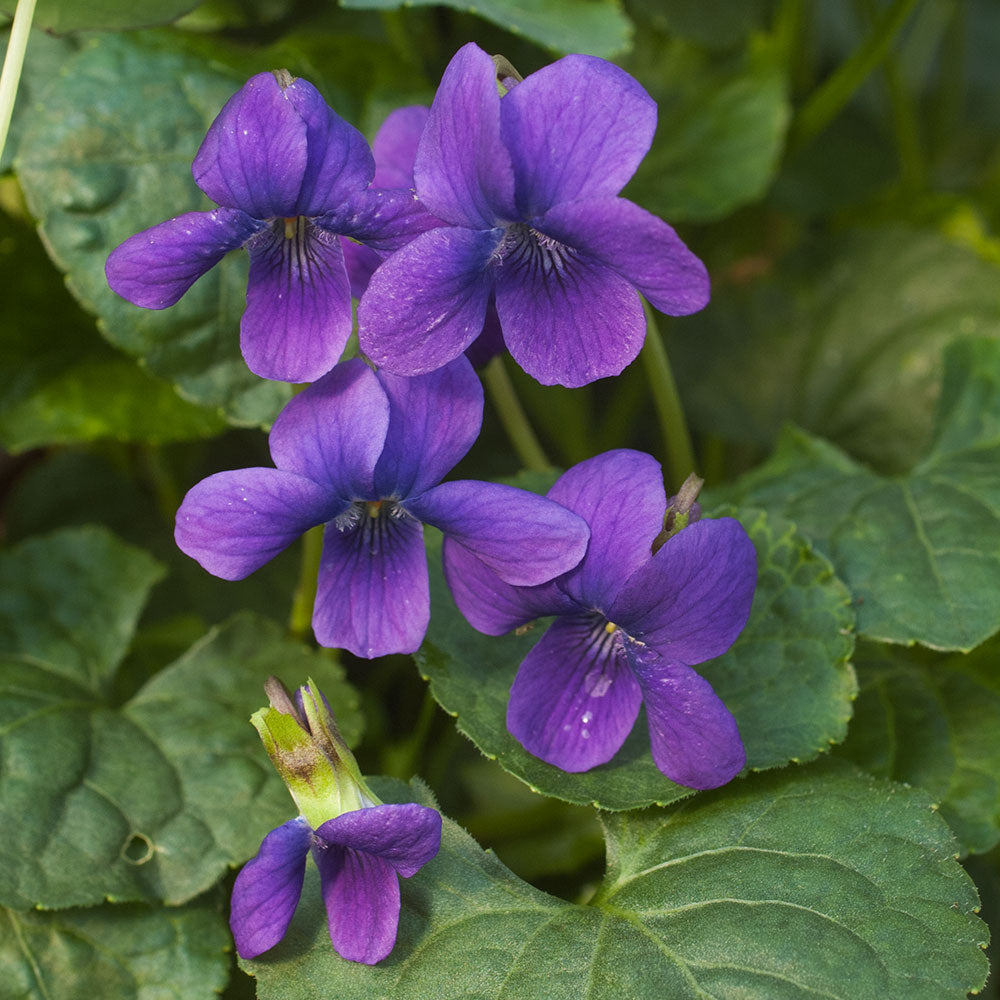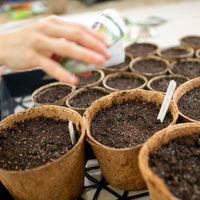SOWING INSTRUCTIONS
Depth:
1/8" seeds require darkness to germinate.
Sprout Time:
7-21 days after chill.
Starting Indoors:
Stratify for 30-60 days. Sow in a container, cover with a plastic bag and refrigerate, or mix seed with damp clean sand or vermiculite, bag, and refrigerate at 35-40F. Check often for germination and maintain a lightly moist medium. Transplant any seedlings as they germinate. After the chill period, sow into soilless media and keep at 65-75F.
Starting Outdoors:
Direct sow in fall or wintersow into pots in the shade, covered with a thin layer of clean sand and a wire screen to keep out mice and voles. Check for moisture at regular intervals.
WHEN TO SET OUTSIDE
In spring, when light frost is still possible, 3 weeks before the last frost date.
PLACEMENT & CULTIVATION
Romans fermented violets into a sweet wine, their hangovers cured perhaps by the same flower, for violets possess salicylic acid—the component of aspirin. Their sweetness is used in flavored sugars, exotic marshmallows, and the tiny flowers are dipped in egg white and then sugar and dried to create candied garnishes. They grow well in cool climates, spreading by runners and seeds that spring forth from capsules. In warmer areas, afternoon shade and mulch can cool things down a bit.
Watering Details:
Keep fairly moist with about 1" of water per week, more during especially dry spells. Do not overwater.
Fertilizer:
Mix in a couple of inches of compost prior to planting. Feed once per month with an organic, water-soluble seaweed or kelp fertilizer, or mix in a granular type after planting.
Diseases & Pests:
Leaf spots and slugs are possible problems. Treat foliage with an organic fungicide and scatter pelletized iron phosphate at the base of the plants to combat slugs.
When to Cut for Bouquets:
Harvest when flowers are nearly open.

































